I was really excited to go for a studio day! I’d never used anything other than natural light for photos so far, and I was going to get to learn the effects of different basic lighting rigs on a subject. We had coffee, biscuits, and all day to learn! I’d brought a small selection of B&W 35mm film with me to choose from, including some that I had been saving for just such an occasion. I must at this point say a massive thank you to David Fulford for opening up his studio to a few of us lucky folks from NWFP – it was a real privilege, and I genuinely learned a lot from the day!
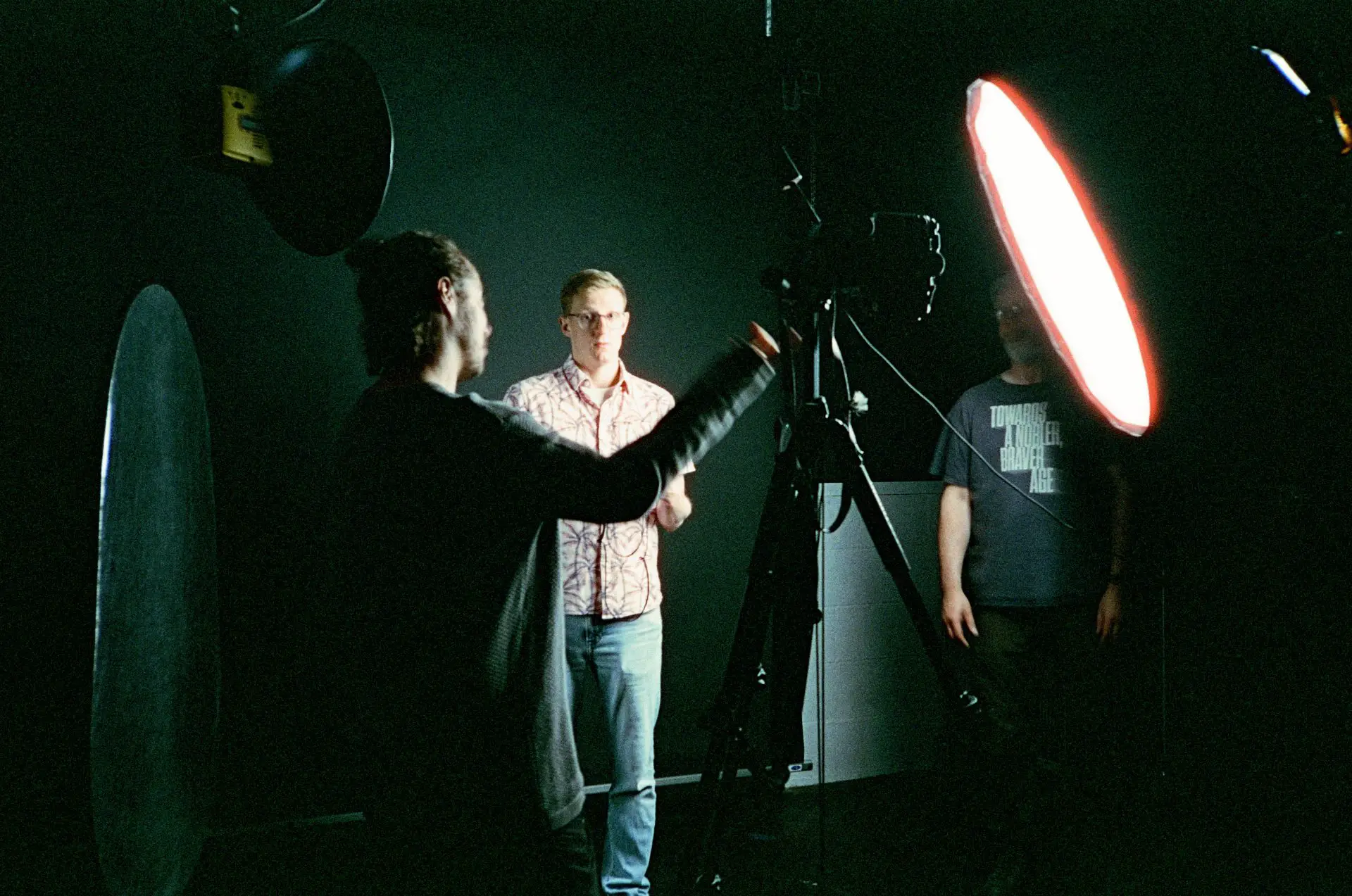
So I drove home after a long day, thinking that I’d done a pretty good job working with the studio lighting, and that I might have a handful of portfolio shots that I was proud of too. I purposefully didn’t rush into developing the one roll of film I’d used during the afternoon shoot, as I wanted to make sure it turned out perfect. Spoiler alert: it did not go well.
What happened?
It started in the changing bag, once I’d got the film out of the canister I knew it felt different. This particular emulsion was much thinner than the standard consumer films I had been using up till now. Firstly I struggled to lead the film around the reel without it crumpling, and then once it had got around the first rotation it proceeded to crinkle, crumple, and bend its way in any other direction except the one I wanted. At this point, I’m starting to sweat. The light-tight bands of the changing bag start to dig into my arms as I pull the reel apart to re-spool the film again. I just could not get it around the reel without it crumpling and jamming everything up. By this point I’ve resigned myself to the fact that the roll will be damaged, and just wanted to get the damn thing onto the reel and into the developing tank. It took thirty minutes and about eight re-spool attempts taking it on/off the reel as I kept failing to manage handling this emulsion.
Eventually I got the whole roll onto the reel and into the developing tank. I took my arms out of the changing bag and downed a pint of water. What followed was fairly standard development using Adox XT-3, and actually the negatives themselves looked ok as far as the development itself goes. However, the results of my wrestling in the changing bag had took its toll on the emulsion, and it was covered (and I mean covered!) in long scratches from re-spooling it so many times.
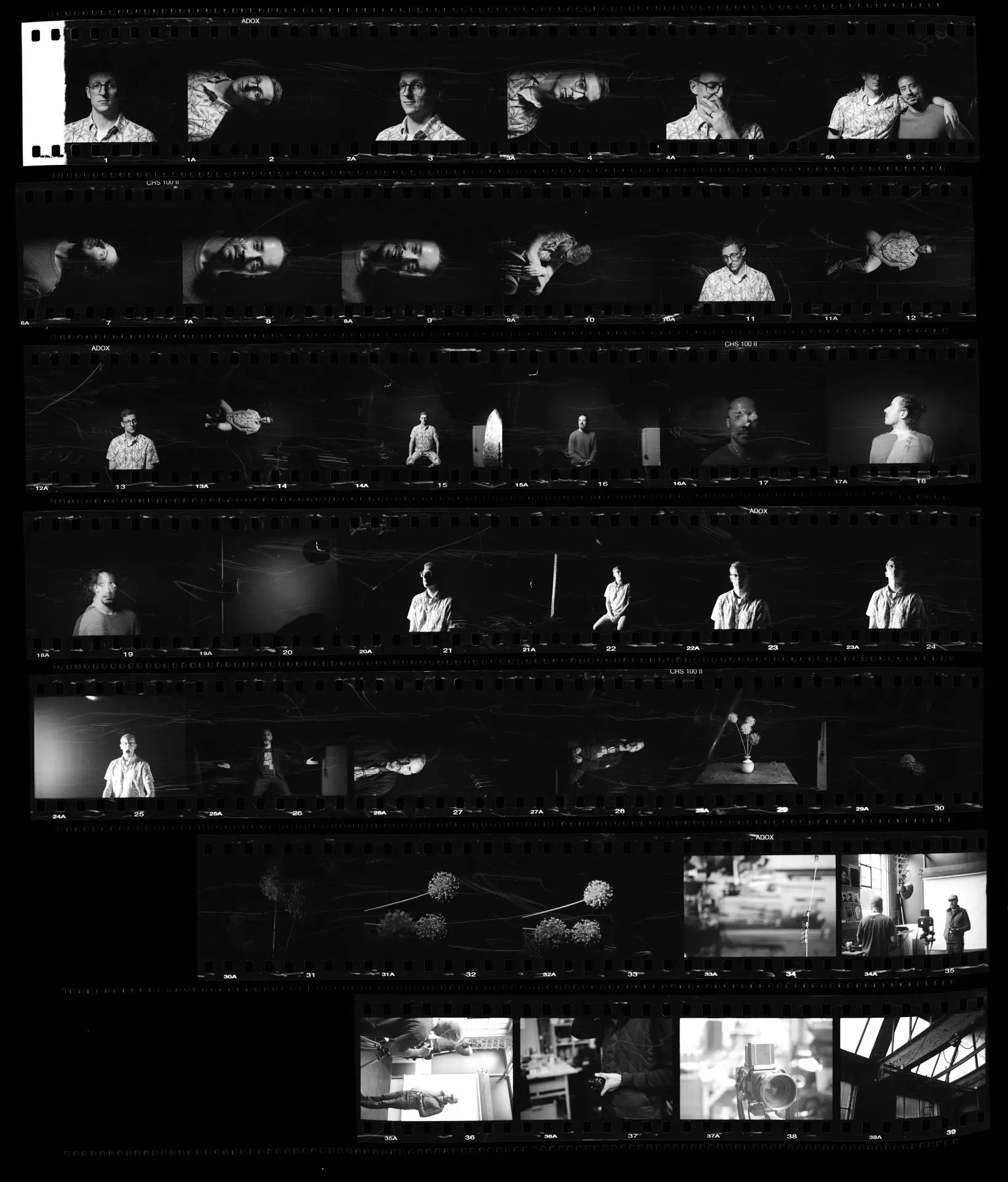
At first I was absolutely gutted! This wasn’t the result I was hoping for after such a lovely learning day in the studio. Every single frame was affected in some way by my errors in loading the film onto the reel. After much discussion with friends at least I felt that I understood why it had been so difficult for me, and that with more experience I would learn to handle different emulsions with care in the future.
I was pleased to hear positive feedback from people via Instagram too, saying they felt the scratches added an element of movement and further interest into the photos. I have to say I wouldn’t want a repeat of this experience, and wouldn’t exactly call the results ‘happy accidents’ but at least I learned something from the whole thing.
Here’s a few more examples from the now infamous roll:



Have you ever had results like this? Have you made mistakes because a film emulsion felt different to what you were used to? Let me know in the comments.
All photos were developed (very badly) by myself, and then scanned (with much sympathy) by the good folks at Come Through Lab in Ancoats, Manchester. Find them on Instagram here: @comethroughlab
I look forward to sharing more of my photos and experiences with this community soon, in the meantime you can find me on Instagram here: @tedayre
Share this post:
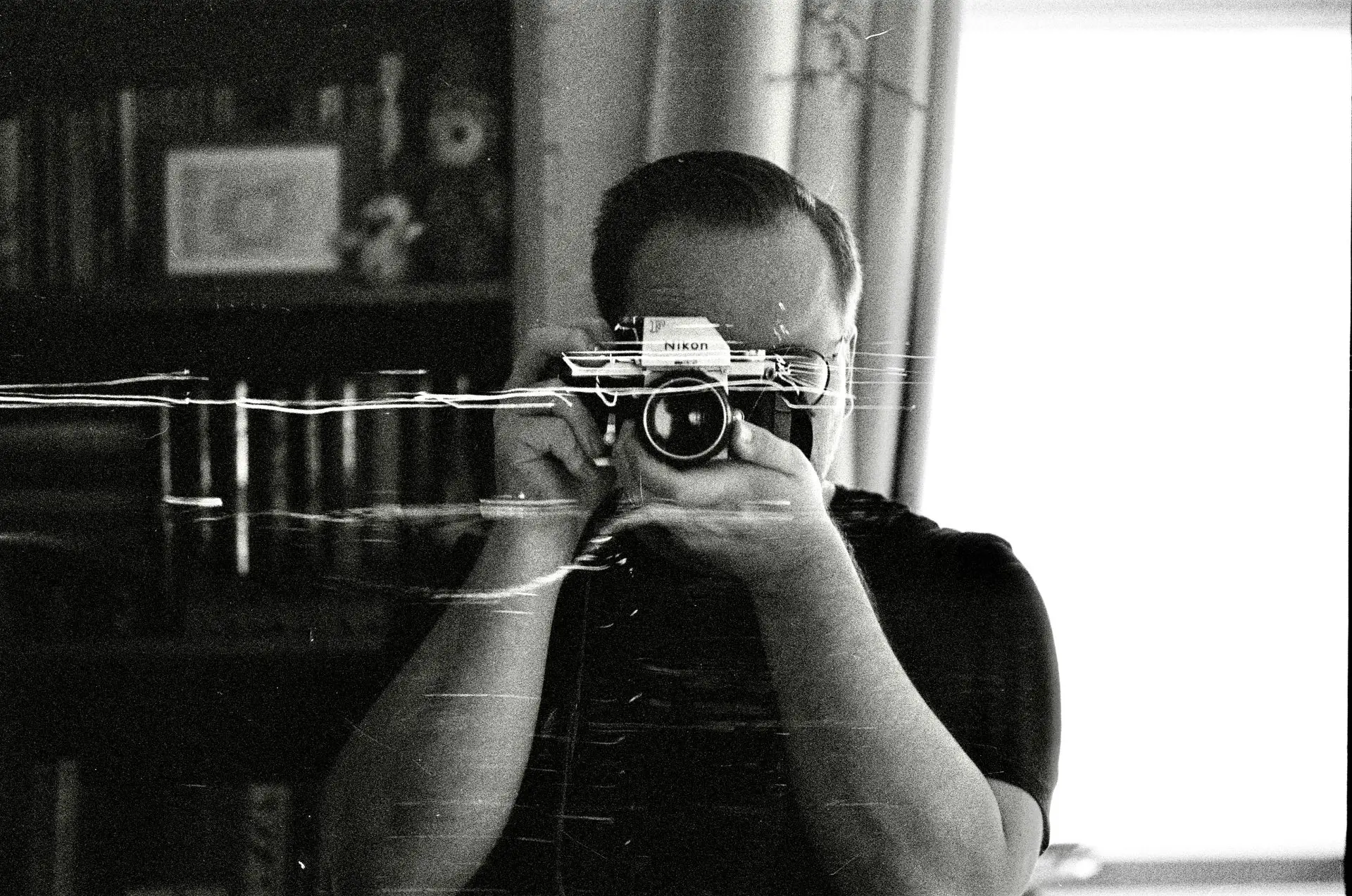

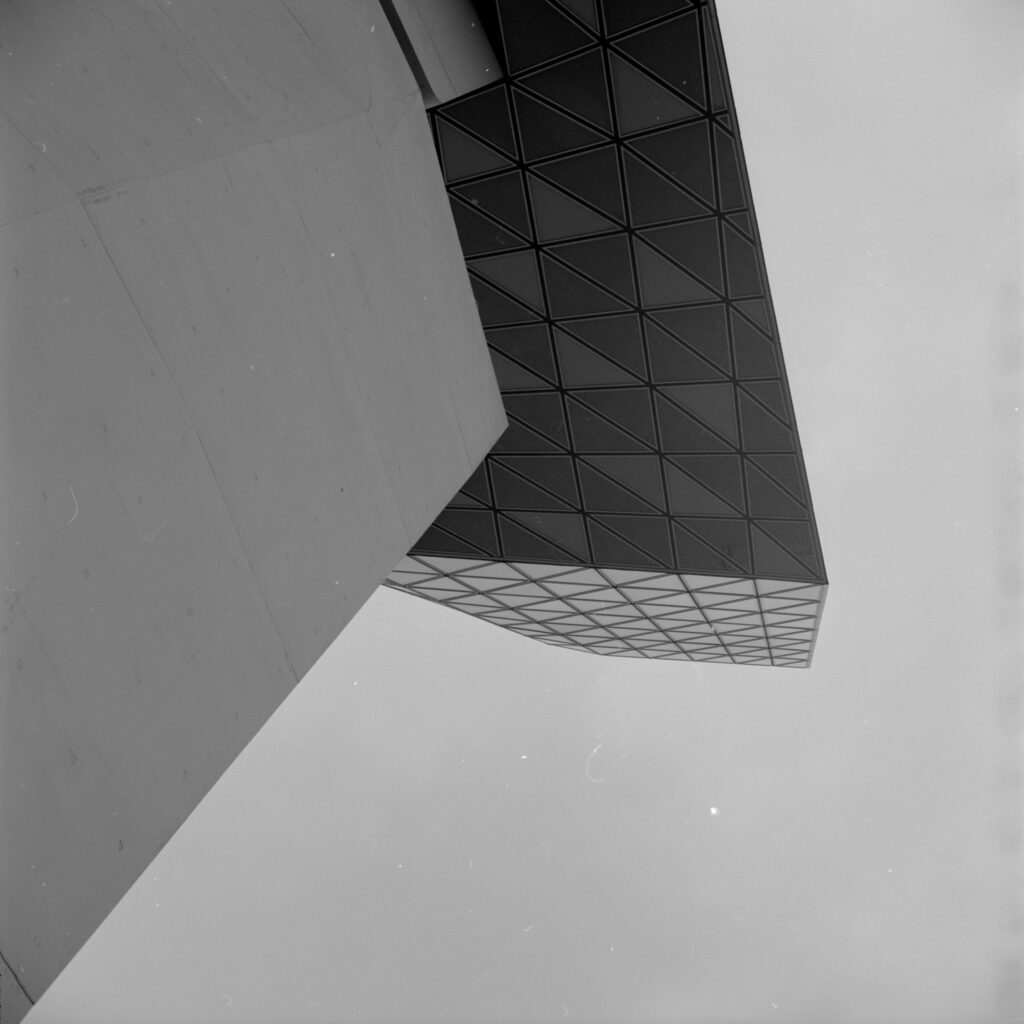
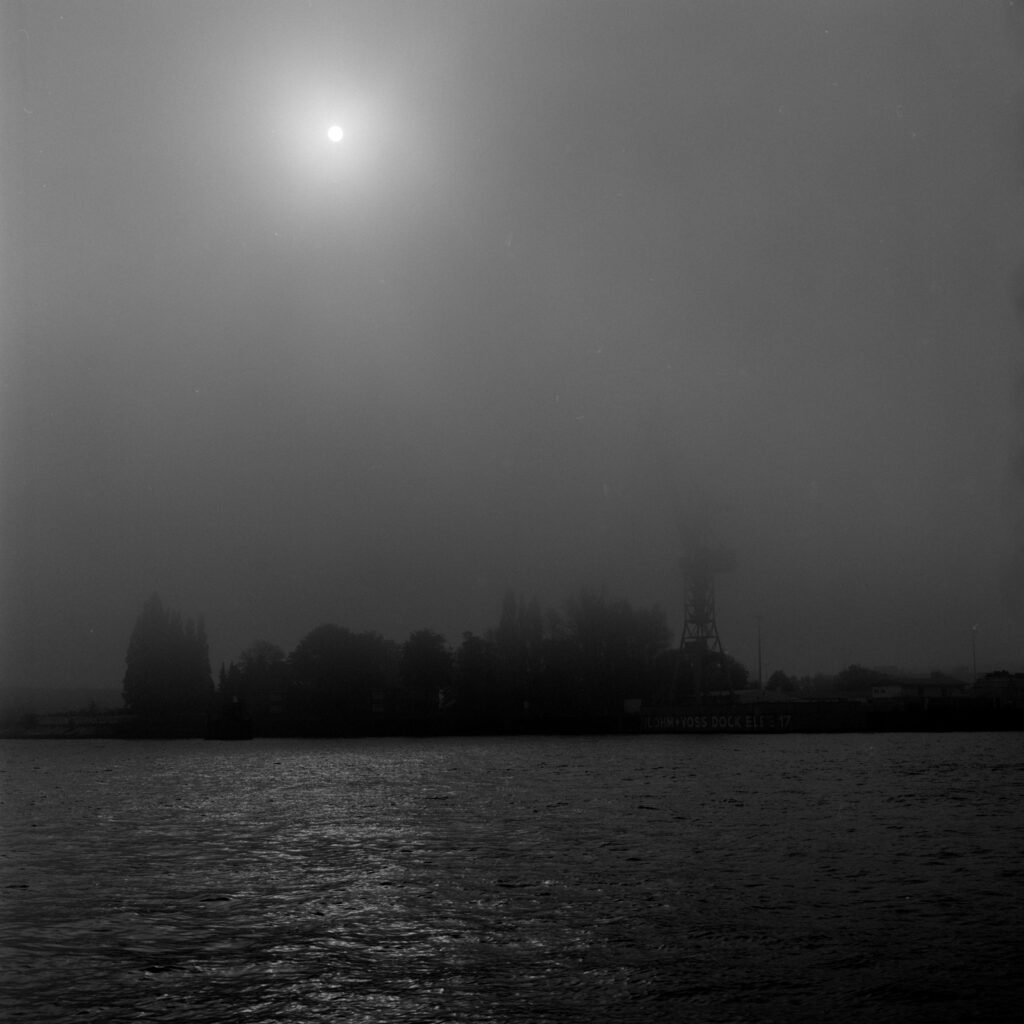





Comments
Bob Janes on My First Major Development Fail
Comment posted: 08/10/2023
Sometimes it can seem like nothing is going right in the dark bag - it is rare, but it does happen. Heat and any moisture really don't help at all. In similar circumstances, I'd have been tempted to put the film into something light-tight in the bag, remove my arms from the bag and have a re-group.
The film must have a very thin emulsion - with that level of scratching, I'd have thought you had intended it.
On a slightly different note, I notice that some of the early shots have a dark band on the top edge of the negative, suggesting the synch speed on the camera might be off (or that you were over optimistic about what the synch speed was). I have read that it changed from 1/200 to 1/250 during FM2 production, but even 1/200 was pretty leading-edge at the time, so I guess it doesn't take much being off in calibration to be out.
Comment posted: 08/10/2023
Arne Heeringa on My First Major Development Fail
Comment posted: 08/10/2023
I guess it happens to everyone, myself included. Worst what ever happened is that I developed a roll with Mirasol by accident (someone hat put it in the Ultrafin box, and bottles look the same) for someone in our darkroom course. I already wondered why it foamed that much. The roll came out blank and now our running gag is 'you can't develop film with Mirasol'.
Happy developing,
Arne
Comment posted: 08/10/2023
Uli Buechsenschuetz on My First Major Development Fail
Comment posted: 08/10/2023
I have a couple of rolls of Adox CHS II 100 and I am warned now.
Interestingly the first roll that I had developed and scanned by a lab here in Berlin came out way grainier than expected, and I assume they used some standard developer. That is why I‘ll probably have the remaining rolls developed by Adox themselves as they are outside Berlin (you can buy the development via Fotoimpex.de, which is actually a company linked to Adox).
Comment posted: 08/10/2023
John Furlong on My First Major Development Fail
Comment posted: 08/10/2023
Cheers,
John F.
Comment posted: 08/10/2023
Comment posted: 08/10/2023
Comment posted: 08/10/2023
Lance Rowley on My First Major Development Fail
Comment posted: 08/10/2023
Comment posted: 08/10/2023
DANIEL J CASTELLI on My First Major Development Fail
Comment posted: 08/10/2023
It looks like goblins riding mini dirt bikes drove over your film. We've all been there, a painful part of the learning curve.
No advice, no 'shoulda, coulda' comments.
Actually, one piece of advice: grab a coffee, sit and have a nice pastry.
Dan
Comment posted: 08/10/2023
John Earnshaw on My First Major Development Fail
Comment posted: 08/10/2023
Comment posted: 08/10/2023
Louis Sousa on My First Major Development Fail
Comment posted: 08/10/2023
Moisture is the great enemy. Pick up some thin gloves that will be lint free. There are dedicated ones sold on photo sites, but latex ones from the hardware store work fine. If you are working in humid conditions without gloves, there is more likelihood of having the film get hung up in the reel, especially if your hands start to create moisture. Also make sure the reel itself is bone dry. I pass a microfiber clots around each segment of the reel beforehand.
The Samigon reels are much easier to load than the Paterson reels. Samigon reels have a loading slot as opposed to the small entry nibs on the Paterson version.
I use the Photoflex square changing tent. It is relatively inexpensive, and gives a lot of room for the hands to work. I have never had an issue with light leaks with this tent.
If the film gets hung up and you separate the parts of the reel, sometimes small indentations will result along the edges of the film. If it is pronounced, you can cut out that small sliver and roll the remainder in two passes. You might sacrifice a frame, but will salvage the rest. You can also use curved small manicure scissors to excise the damaged edge itself.
Comment posted: 08/10/2023
Louis Sousa on My First Major Development Fail
Comment posted: 08/10/2023
I was told early on to snip a 45 degree angle into each side of the leading edge, in between the sprocket holes. I am rarely able to get this right (no jagged edge in the cut), but I still do this every time anyway.
If it is any consolation, after years of practice I am in and out of the changing bag in a few minutes.
Comment posted: 08/10/2023
Comment posted: 08/10/2023
Steve on My First Major Development Fail
Comment posted: 08/10/2023
Comment posted: 08/10/2023
Steve on My First Major Development Fail
Comment posted: 08/10/2023
Comment posted: 08/10/2023
Jim Scheffler on My First Major Development Fail
Comment posted: 08/10/2023
Photography in the darkroom era was much more personal, when every shot counted and careful effort was required to produce images in a quality vs quantity manner.
Thanks again for your article!
Comment posted: 08/10/2023
CP93 on My First Major Development Fail
Comment posted: 08/10/2023
Comment posted: 08/10/2023
Mark Hanley on My First Major Development Fail
Comment posted: 08/10/2023
Comment posted: 08/10/2023
Alan on My First Major Development Fail
Comment posted: 09/10/2023
Every time it's gone wrong, I've figured out why and added another precaution to prevent past failures. The merest hint of moisture will completely seize the spiral. My hands sweat - a lot. Hell, even my forearms sweat in the changing bag. I wear lint-free negative handling gloves - and also wear a long-sleeved shirt in the changing bag. Even if the spiral has been sat drying for 6 weeks - I dry it off with a hot hairdryer before it goes in the changing bag. I handle the spiral at all times with gloves on. I move the ball bearings to check they are free and moving freely. The films to be developed come out of the fridge a good 6 hours minimum before they are needed - and warm up while they are locked inside their airtight canisters. I cut the leader to shape with 45-degree cuts in daylight - and begin winding 135 film onto the spiral in daylight. One of my cameras (Minolta CLE) tends to leave film nearer the leader with a tight curl - this needs cutting off entirely or carefully bending back to be straighter. I don't open the metal 135 film canister, but spool it directly from inside - and carefully cut the film when I reach the end. If the film does stick - I bang the side of the spiral hard and gently see if it will move again. Despite these precautions, if it still all goes pear-shaped - I don't ever fight it - this will always nuke the emulsion. When things show the slightest hint of going wrong - film is most always immediately wound back inside the 135 canister (or carefully rolled up inside the Patterson tank for 120) - and left aside for another day. After 24 hrs of resting, and going back to it again, the film will invariably wind straight on the spiral with no problem whatsoever the next day. As you can see from the above text - I have had a LOT of failures, but they are a good opportunity for learning!
TLDR:
1. Moisture is the enemy, so I'm careful to keep things dry.
2. I wear gloves to avoid contamination and handle the spiral gently.
3. Films warm up outside the fridge before use.
4. I cut the film leader in daylight at a 45-degree angle.
5. I spool 135 film directly from the canister.
6. If the film sticks, I gently tap the spiral.
7. If things go wrong, I don't force it; I let it rest for 24 hours.
Comment posted: 09/10/2023
Comment posted: 09/10/2023
Geoff Chaplin on My First Major Development Fail
Comment posted: 09/10/2023
Fulford and Beatty shots are excellent and the scratches, with the image titles, work well. Better luck next time!
Comment posted: 09/10/2023
Julian Tanase on My First Major Development Fail
Comment posted: 09/10/2023
That said, this is an experience, and as you learn from it, it becomes knowledge :) .
Comment posted: 09/10/2023
Jukka Reimola on My First Major Development Fail
Comment posted: 09/10/2023
Comment posted: 09/10/2023
Paul Quellin on My First Major Development Fail
Comment posted: 09/10/2023
Comment posted: 09/10/2023
Eric on My First Major Development Fail
Comment posted: 09/10/2023
Comment posted: 09/10/2023